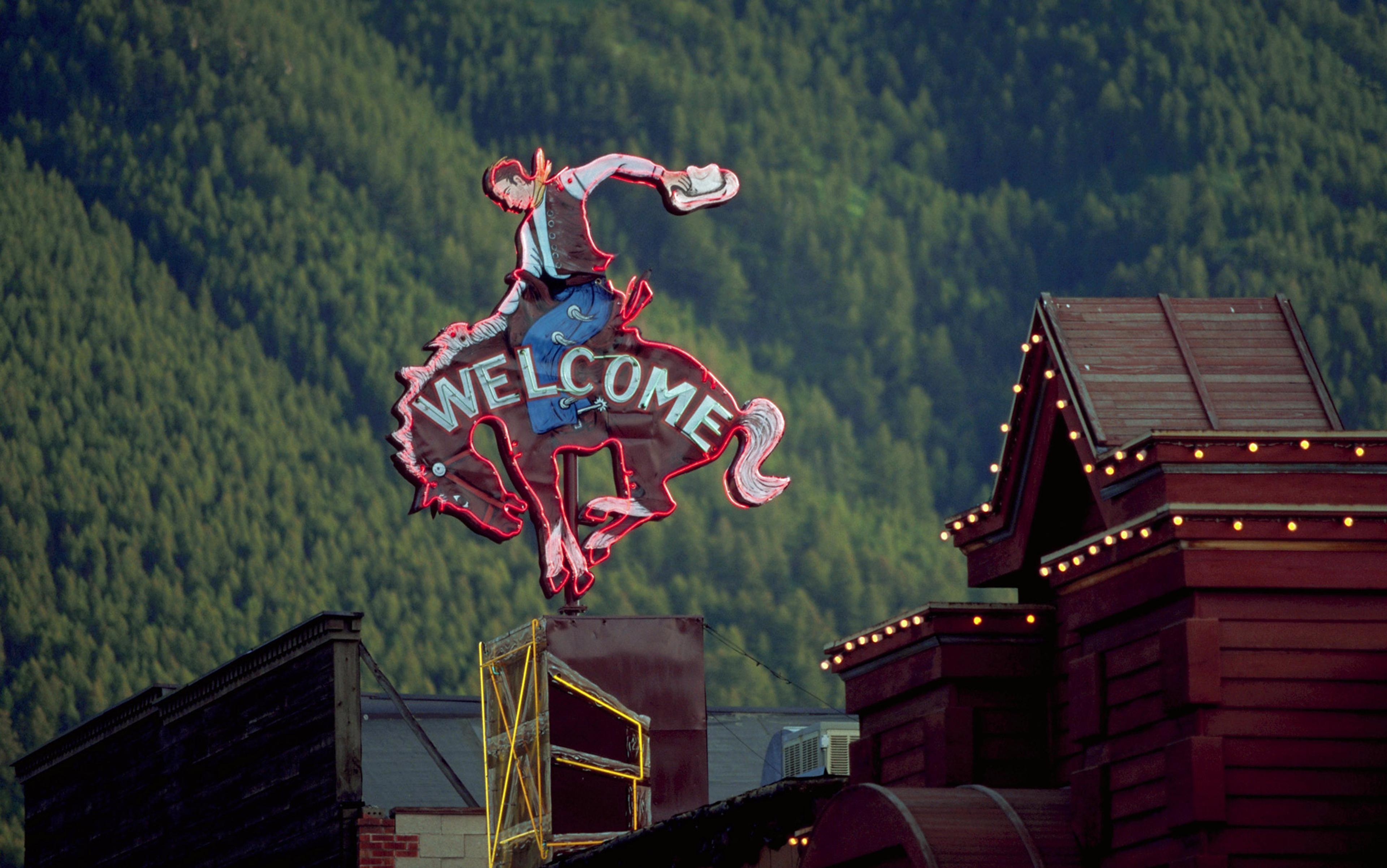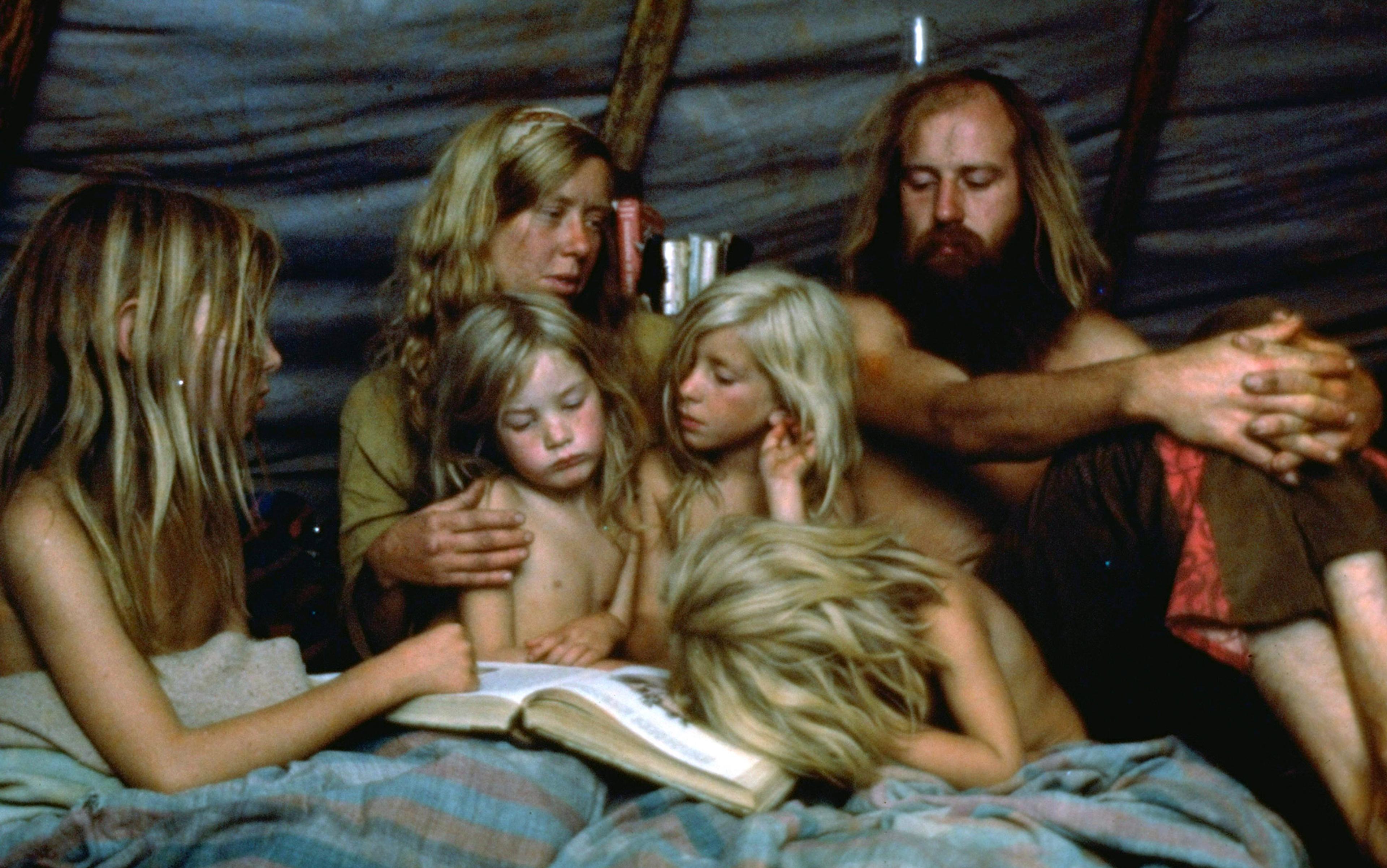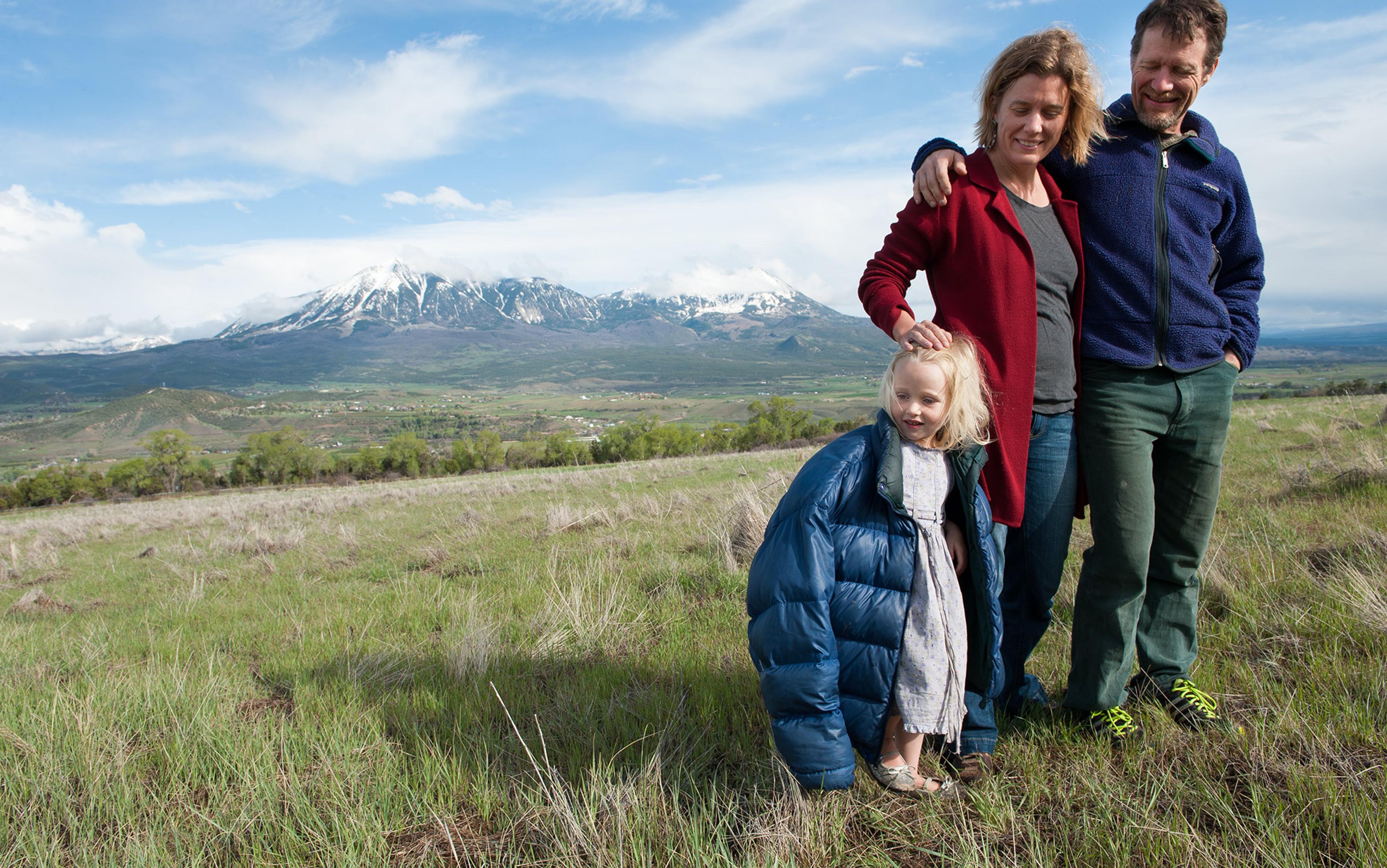The first time I met an Amish person I was a teenager. It was 1985, and my family had recently moved back to Ohio from a stint in the United Arab Emirates. Life overseas had given me a hunger to know about other cultures, and also the Harrison Ford movie Witness had just come out. So when my family encountered a bearded, Abraham-Lincoln figure selling baked goods from a buggy, I was a little seduced by the tableau of simplicity that he presented. Then the man reached into a Coleman cooler for a block of Swiss cheese. That image has never left me. The fiberglass food safe with its bright‑green lid seemed so out of place.
The Amish, apparently, were more complicated than I thought.
Since then, I’ve probably visited more Amish settlements than anyone. Who would venture out to the most remote corners of Montana, Maine and South Texas if they didn’t happen to be a student of Amish culture? Perhaps a peddler of pots and pans; many Amish cooks, I have noticed, gradually gave up their cast iron for stainless steel in the past 50 years.
In my 25 years exploring Amish communities, I’ve witnessed changes that would be unnoticeable to the average outsider. I’ve seen the legendarily technology-avoidant Amish texting (and texted with a few), ordering books from Amazon, having their own Facebook accounts (horses seem to be a popular avatar), sending emails, even lecturing in universities – which is ironic as the Amish eschew formal education beyond eighth grade. There was something subversively delicious about a man without even a high-school diploma holding court for doctoral students.
To the average person, the Amish are flash-frozen daguerreotypes, little changed from their 17th-century roots. Indeed, this image is an enormous tourist attraction: the desire to hear a clip-clopping buggy, to see horse-drawn plows working the fields and bursts of colourful laundry flapping in a summer wind pumps $1.9 billion annually into the economy of Lancaster County in Pennsylvania alone, according to a study by the Pennsylvania Dutch Convention and Visitors Bureau. Public fascination has made an ostensibly private people amazingly visible. Amish-themed romance fiction generates $720 million in annual sales. TV schedules have seen such ‘reality’ confections as Amish in the City (2004), Amish at the Altar (2010), Breaking Amish (2012), and, for good measure, American Colony: Meet the Hutterites (2012). There was even a rather far-fetched show called Amish Mafia (2012), purporting to show the organised ‘underworld’ of the ‘Plain people’.
While these shows were airing, however, the Amish were doing a fine job of creating their own non-fiction headlines. It was, for instance, tough to argue that Amish Mafia was invented once a group of ex-Amish goons were charged in 2012 for forcibly cutting the hair of Amish members, and the beards of the men, under orders from an authoritarian bishop. Meanwhile, the businessman Monroe Beachy apparently decided that the Plain people needed their own Bernie Madoff, constructing a Ponzi scheme that collapsed in 2010 in the pastoral hills of Holmes County, Ohio, taking millions of hard-earned Amish dollars with it.
Or this incident, curiously underreported: in 2009, in Wayne County, Ohio, an Amish man was accused of persuading his Mennonite mistress to kill his wife as she and their children slept. At trial it came out that Eli Weaver was having multiple affairs with paramours he met through his smartphone. To my mind, this story marked the real turning point. Here at last we saw in plain sight the reach of technology into Plain America.
In reality, the Amish cherrypick the progress that best serves their interests. For instance, despite their reputation, they aren’t really against electricity. Yes, the vast majority don’t use it (a handful of Amish settlements do permit electric). But the issue isn’t the juice, it’s some of the items the juice can feed. An electric toaster or a reading lamp might be okay, as they pose no obvious threat to the Amish canon of community and family. But electricity also powers other stuff: computers and TV, purveyors of smut and sin and Amish Mafia. Rather than square off over every gadget, most Amish simply ban being attached to the grid and that solves the problem. If there’s something they really want to power, such as milkers or an electric saw, they’ll find a way.
This attitude poses some interesting chicken-and-egg problems to the historian. Could Jacob Ammon, the original founder of the Amish movement, have envisioned television and the internet? Would he have applied his doctrine to them? That’s up to today’s church leaders to interpret. But the questions now straining the minds of Amish intellectuals are much less backward-looking. They want to know what future innovations will be acceptable, and at what price?
To figure out the future of the Amish, the past serves as both a template and a cautionary tale. For some perspective, I contacted Diane Zimmerman Umble, who has been venturing into Amish settlements even longer than I have. She is the Dean of the College of Arts, Humanities and Social Sciences at Millersville University in Pennsylvania, and her specialty is past incursions of technology into the Amish world.
It was Umble who told me that, when telephones first became available in Lancaster County in the 1880s, the Amish embraced them. That came as a surprise. The area was, she said, a hotbed of telephonic innovation and development. ‘There were dozens of small community telephone lines, people who got together in small towns and strung wires from fencepost to fencepost or to connect communities,’ Umble explained. ‘Sometimes there were family lines. The technology was promoted. Some Amish viewed the technology as Divinely sent.’
Some left because they did not want to give up the phone. About 20 per cent of the community was lost to this split
But not everyone agreed. There was a long-running debate between the Old Order Amish and their close cousins, the Old Order Mennonites (OOM), as to what this remarkable new device might portend. There were articles in local weeklies debating the phone’s merits. The Mennonites were particularly disturbed by an oath one had to swear in order to form an independent phone company. The law required a binding undertaking to submit annual reports. The Mennonites had a long tradition of not swearing oaths: ‘loyalty to God, not government’, as Umble put it.
Around this time, the OOM circulated a tract purporting to refute the telephone’s divinity. The case rested on a single conversation, whose contents are now lost to history. In 1909, an Amish woman was talking to a friend about some sensitive matter. Unwittingly, they were overheard by a third woman. She quickly spread what she had heard throughout the church and, more pertinently, throughout the local telephone network. The fallout from this tech-accelerated gossip cast such a pall over Lancaster County’s Amish community that autumn Communion was cancelled. So the bishops decided that telecommunications just weren’t worth the risk. ‘The bishops proclaimed no phones should be in the Amish home,’ said Umble. ‘Some were willing to submit. Others were not, and left because they did not want to give up the phone.’ About 20 per cent of the community was lost to this split.
Ever since, the Amish have struggled in a carefully choreographed dance with the telephone. And each dance has a different choreographer. While many churches have some sort of centralised church structure, no such thing exists for the Amish. Authority begins and ends with the local bishop. An Amish congregation in Intercourse, Pennsylvania may embrace phones while an Amish church in Crab Orchard, Kentucky rejects them. This causes a patchwork of rules, and a church that varies immensely from place to place.
The hope in 1910 was to banish telephones from the lives of the Amish forever. It didn’t work out that way. The dairy business was changing and so were doctor’s offices. No longer did a patient just show up with a loaf of bread to trade for a gout examination; doctors started to demand advance appointments. And as more Amish began to seek work outside farming, taking up occupations such as cabinetry and carpentry, there was a need to place orders for lumber and nails. Thus was born the concept of the community phone, a ‘shared shanty’ where commerce could be conducted and appointments made.
‘The shared shanties were really not designed for incoming calls,’ Umble told me. ‘They were so you could make a call and ask the vet a question, or schedule a doctor appointment or delivery.’ Problem solved? Not quite.
Shanties are still in use today in many Amish settlements. If you’ve ever been to Amish country, you might have passed one without realising it. I’ve used them myself. Most are phone-booth sized, and could easily be mistaken for an outhouse. But some have morphed into off-site business centres. Some phone ‘shanties’ in Amish Indiana are now large outbuildings with banks of phones, faxes and humming electric freezers. This is the Amish way of allowing some technological indulgence but keeping it out of the home. Often a non-Amish person will own the facility, charging freezer rent and phone-use fees.
some inventor decided to merge the internet with the phone, never imagining that this would tip an entire church into turmoil
But if it was easy enough to banish the wall-mounted telephone to a shanty, cell phones were another matter. In the beginning, they seemed like a marvellous compromise between the shanty and the landline. The cell phone could, in theory, be turned off and stuck in a drawer. And solar-powered phone chargers seemed to provide a way to have them without relying on the infernal grid.
‘We grudgingly allowed cell phones in the beginning, but that was before they had cameras in them,’ explained Everette Burkholder, an OOM buggy-maker in Dayton, Virginia. Then along came the internet, which some inventor decided to merge with the phone, presumably never imagining that this would tip an entire church into turmoil.
I was recently exploring the aisles of a wonderfully eclectic bookstore tucked away in the Shenandoah Valley outside Harrisonburg, Virginia, not far from Burkholder’s Buggy Shop. The place belonged to two Mennonite sisters. I asked one of them for directions to the highway, and a clutch of teenage boys overheard me. They were dressed in classic Old Order fashion: wide-brimmed black hats, black coats and pants.
‘Why don’t you just Mapquest it?’ suggested one. And I was once again reminded that the Amish, despite all their pop‑culture mystique, don’t live in a bubble. The encounter reminded me of a time when an Amish man was boasting to me about his buggy’s all-weather durability. I looked at his Plexiglass windshield. ‘What do you do when it rains?’ I asked. He pulled a small bottle from the folds of his jacket and beamed. ‘I just use Rain-X.’
The Amish population is growing. By some estimates there are 300,000 in the United States, and the birthrate is very high: the population doubles roughly every generation. One county in Ohio is poised to become the first majority Amish county in the US by 2020. An Indiana county is close on its heels. This will bring increased political clout. Eventually the Amish will choose to use it – first on zoning issues (an Amish man in Ohio sits on a zoning board) and then, perhaps, on issues of social import to them such as gay marriage and abortion.
What’s more, this rapidly growing population will presumably spread into states that have never seen buggies before: California, Nevada, Utah, even Alaska. The Amish are not always welcome in new areas. Even today there are battles over horse dung, building codes and liability insurance wherever the Amish decide to plant roots. Will we see large numbers of Amish moving into Central and South America? The Mennonites have been there for years. I wouldn’t be surprised to see the religious liberty and wide-open lands of Australia proving appealing one day in the next 50 years. The first Beachy Amish church was established in Ireland in 1992 and more will follow. Amish churches in Montana already allow their flocks to travel by plane, since so many have family back east.
Here’s another prediction: there will be a major split in the church. And it will be over the internet. One only has to look to the German Baptist Brethren church, a similar, albeit smaller, group to the Amish that underwent a schism in 2009. The leadership issued a terse report declaring the theological reasons behind the disagreement (‘Members… agree that the Old German Baptist Brethren’s interpretation of NT doctrine is scriptural’ says the report), but really the problem was the internet. Ancient scripture couldn’t anticipate Google and Angry Birds. So today, the Old German Baptists are divided into a New and an Old Conference. The New embraces the web while the Old still hews to the pre-wireless age. To me, that looks like the shape of Amish life to come.
The weekly Amish newspaper The Budget is full of advertisements for products you won’t find anywhere else, products that craft a compromise: cell phones without wireless access, computers without internet access, and Kindle-type reading devices that don’t require a connection to load the texts. There are Amish voicemail services, Mennonite phone‑dating services. Anything to make life easier that doesn’t involve the internet. But that task is becoming more difficult with each passing day.
‘The internet is the Mark of the Beast,’ says Aaron Lapp, who runs a greenhouse in rural Indiana. He moved there, like most of his Amish neighbours, from crowded Lancaster County. Even there, he struggles to get away from the tourists. ‘The Amish would be better off if we could just stay to ourselves,’ he told me. But, he added, motioning to his greenhouse where my wife and I had just bought a couple of perennials, that’s not practical.
Picture a whole AmishNet, free from porn and gambling, an internet that keeps the Amish firmly grounded on the farm
Is the internet really such a threat to the Amish? If one of the pillars of Amish culture is keeping the family together at home, then the internet might turn out to be a boon. If there is a single invention that has allowed people to work from home, it is the internet. Could there be a world where Amos Yoder sells his handmade clocks on Etsy, or Wilma Hershberger has an online portal selling her pickles? Already, there are Amish selling goods online by proxy.
The Amish have shown there can be a détente with computers. If the real evil of the internet, in the Amish view, is the content, they could take a page from some countries that heavily filter it. Picture a whole AmishNet, free from porn and gambling, an internet that keeps the Amish firmly grounded on the farm. Progress never really left the Amish behind before. I don’t see why it would start now.
Back in college, I took some philosophy classes, and I remember my professor arguing that societies created ‘primitive others’, largely as strawmen to make the group in power seem superior. Is that what the Amish are for the rest of us? Beyond the billions of Amish-related tourism dollars coursing through the country’s economic engine, beyond the massive glut of Amish media, restaurants and even theme parks, we need the Amish for something more basic: to make ourselves seem progressive and modern. But, in the end, it’s the Amish emphasis on fellowship and family, connectedness and community, that could win the race. Perhaps we’re the primitive other.






